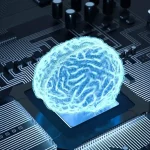Design Systems for Edge Computing: Enhancing Performance in a Decentralized World
- Post
- August 7, 2023
- Design Systems, UI/UX Design, Web Design
- 0 Comments
In the ever-evolving landscape of technology, the convergence of edge computing and design systems has emerged as a pivotal solution to address the challenges of performance and decentralization. As we delve into this intricate realm, we uncover the symbiotic relationship between design systems and edge computing, redefining the way we optimize digital experiences. This comprehensive exploration delves into the fusion of these two paradigms, their real-world applications, and the advantages they offer.
Understanding Design Systems and Their Evolution
Design systems, the bedrock of consistent and efficient user interfaces, have seen a remarkable evolution. Originally conceived to standardize design elements, they now encompass a broader spectrum, including guidelines, code snippets, and UI components. The primary aim remains unaltered – fostering seamless communication and collaboration among designers, developers, and stakeholders. In the context of edge computing, design systems play a pivotal role in creating uniform experiences across diverse devices and platforms. As the digital landscape expands beyond traditional computing environments, the need for adaptable, consistent, and performance-oriented design becomes even more apparent.
Edge Computing: Unveiling the Decentralized Frontier
Edge computing, on the other hand, represents a paradigm shift in processing and data management. Instead of relying solely on centralized cloud servers, edge computing pushes data processing closer to the data source – the “edge” – reducing latency and enhancing real-time capabilities. This architectural shift is instrumental in supporting applications that require quick responses and continuous connectivity. Incorporating design systems into edge computing opens up new vistas of possibilities. By implementing uniform design principles across a multitude of edge devices, organizations can ensure a cohesive user experience while capitalizing on the unique strengths of each device.
The Synergy: Design Systems meet Edge Computing
The amalgamation of design systems and edge computing presents a promising paradigm. Let’s explore how this synergy enhances performance and user experience:
Consistency Across Devices
Design systems provide a framework for maintaining visual and functional consistency, regardless of the device being used. This consistency is paramount in edge computing scenarios, where users interact with applications across a diverse range of devices, from smartphones to IoT devices.
Reduced Latency, Enhanced Responsiveness
Edge computing’s hallmark is reduced latency, which translates to faster response times for users. By coupling this responsiveness with design systems’ adaptability, applications can seamlessly adjust their interfaces to various devices, ensuring smooth interactions.
Optimal Resource Utilization
The collaboration between design systems and edge computing optimizes resource allocation. As design elements are standardized and efficiently utilized, the burden on edge devices is minimized, leading to improved performance and energy efficiency.
Personalization at Scale
The convergence of design systems and edge computing enables personalized experiences on a mass scale. By leveraging real-time data processing at the edge, applications can deliver tailored content and interfaces to users, enhancing engagement.
Scalability and Future-Readiness
In the dynamic world of technology, scalability is a cornerstone. Design systems ensure that applications can scale without sacrificing consistency. When integrated with edge computing, this scalability extends to diverse devices, creating a future-ready ecosystem.
Real-World Applications
The synergy between design systems and edge computing finds applications in various sectors:
Smart Cities and IoT
In smart city initiatives, where countless IoT devices collaborate, a unified design language becomes essential. Design systems harmonize the user experience, while edge computing supports real-time data processing for smart urban services.
Healthcare and Wearable Tech
Healthcare applications often involve wearables and sensors. The integration of design systems ensures a consistent interface for medical professionals and patients, while edge computing guarantees swift processing of critical health data.
Retail and Customer Engagement
Retailers leverage design systems to offer a seamless shopping experience across platforms. With edge computing, location-based services and personalized recommendations can be delivered swiftly to enhance customer engagement.
Final Words
In an increasingly decentralized world, the synergy between design systems and edge computing holds the promise of superior performance and user experiences. By fostering consistency, reducing latency, optimizing resource utilization, enabling personalization, and ensuring scalability, this symbiotic relationship ushers in a new era of digital innovation across industries.
Commonly Asked Questions
Q1: What are some popular design system examples?
A1: Some renowned design systems include Google’s Material Design, Apple’s Human Interface Guidelines, and IBM’s Carbon Design System.
Q2: How does a design system benefit cross-device applications?
A2: A design system ensures consistent visuals and functionality, enabling seamless user experiences across diverse devices.
Q3: Can edge computing enhance application responsiveness?
A3: Yes, edge computing significantly reduces latency, leading to faster application responses and improved user interactions.
Q4: What role does edge computing play in IoT ecosystems?
A4: Edge computing processes IoT data closer to the source, reducing latency and supporting real-time decision-making in IoT applications.
Q5: How does the collaboration between design systems and edge computing impact scalability?
A5: The integration ensures that applications can scale without compromising design consistency, adapting seamlessly to various devices and platforms.




